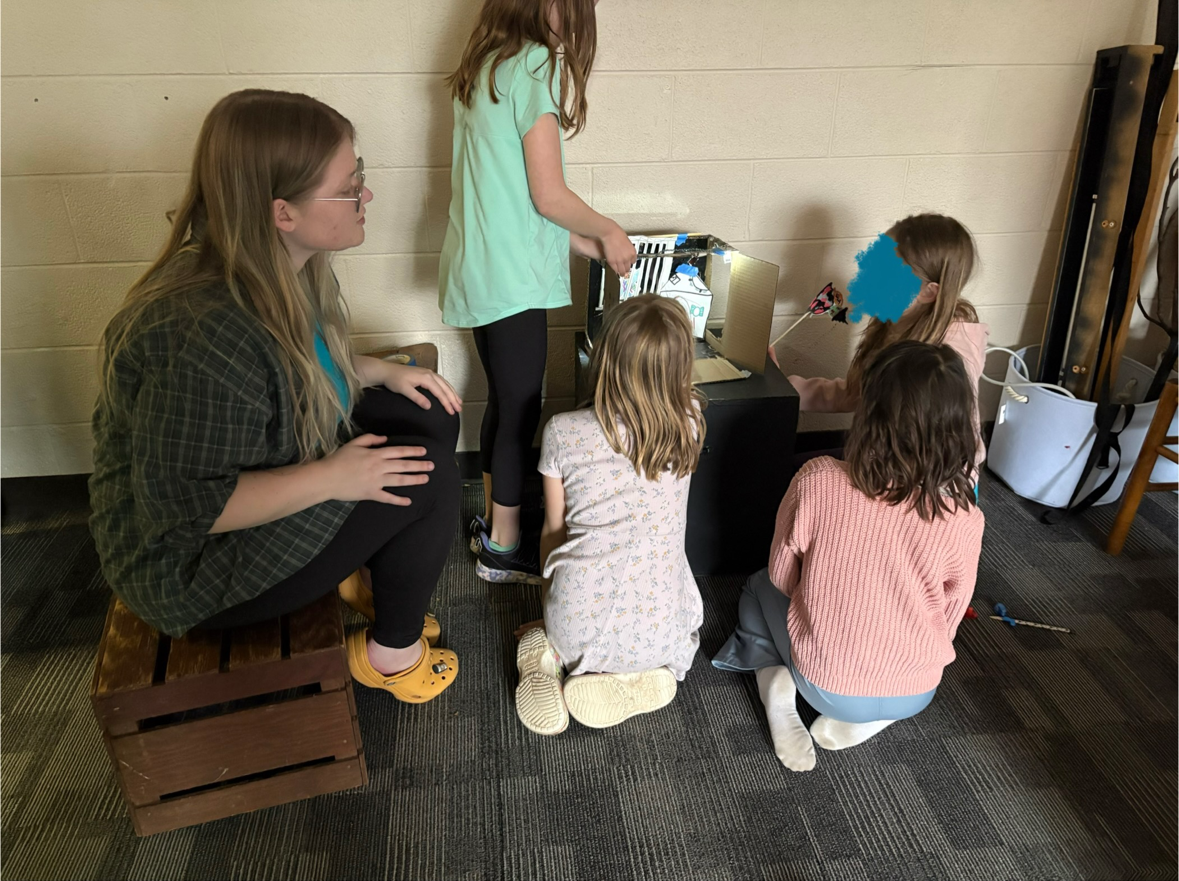My Teaching Philosophy
As a multidisciplinary artist with a background in creative writing, design, directing and theatrical storytelling, my favorite place to teach and learn is at a round table or in a circle on the ground (“not a CLUMP, but a circle!” as I remind the littles). This comes from my experience in high school where I fell in love with the Harkness method of teaching and learning: where classes are discussion-focused, inquiry-based, and decentralized. All voices are equally valued and respected. I strive to uphold the core tenets of the Harkness method in my teaching artistry work. I always begin classes with young people by doing a check-in with each participant. Everyone’s mental and emotional state is important to acknowledge, as though we were sitting, eye-level, at a table across from one another.
A favorite English teacher of mine once defined an essay as “an exploration,” and it changed the way I approached both learning and teaching from that point forward. As a teaching artist, I think of my work and the various types of art-making involved in what I do and teach as an exploration. I prefer to ask questions and facilitate discussion-based learning together, although I share my own thoughts and responses with the group if I believe it to be helpful. In the pictured workshop I taught, I am facilitating a group of young artists as they explore using finger-lights in their shoebox theater paper-puppetry piece! My favorite questions to ask from where I’m sitting there begin with “what if…?”
As someone with multiple learning disabilities, the classroom was not a safe place for me growing up – I still frequently say that “I love school – school just doesn’t always love me back.” Thankfully, I have had many very patient, caring teachers who were not afraid to express their own vulnerability in solidarity with their classes. They encouraged me to embrace difficult experiences in pursuit of learning, which is itself a daunting endeavor. My most precious memories of teachers are of those who laughed, cried over beautiful work and struggled bravely as we collaborated to solve problems, and therefore I am proud to be a teacher who laughs, cries and struggles through challenges in class along with students. And of course, laughter, sorrow and challenge are all key elements of good theatrical story-telling.
Lesson Plan Samples
In this 60 minute workshop intended for 2nd-5th graders, students will explore puppetry, set, and lighting elements in order to create a theatrical interpretation of Ogden Nash’s poem, The Adventures of Isabel in a shoebox/cardboard box paper theater.
This 35 minute K-3rd grade workshop is intended to highlight the artistry in design/found objects/costume pieces that are utilized in I Want My Hat Back to evoke the imagery of the forest and animals onstage.

